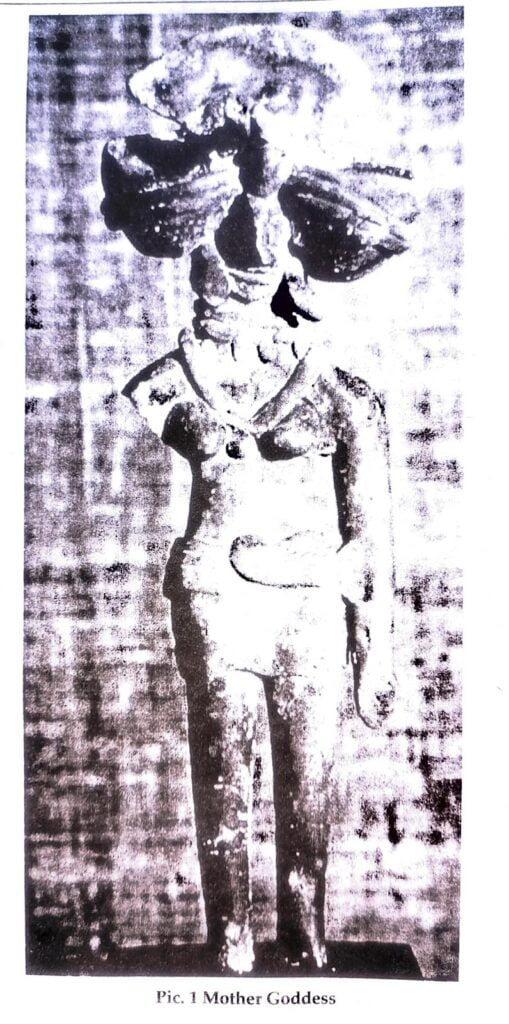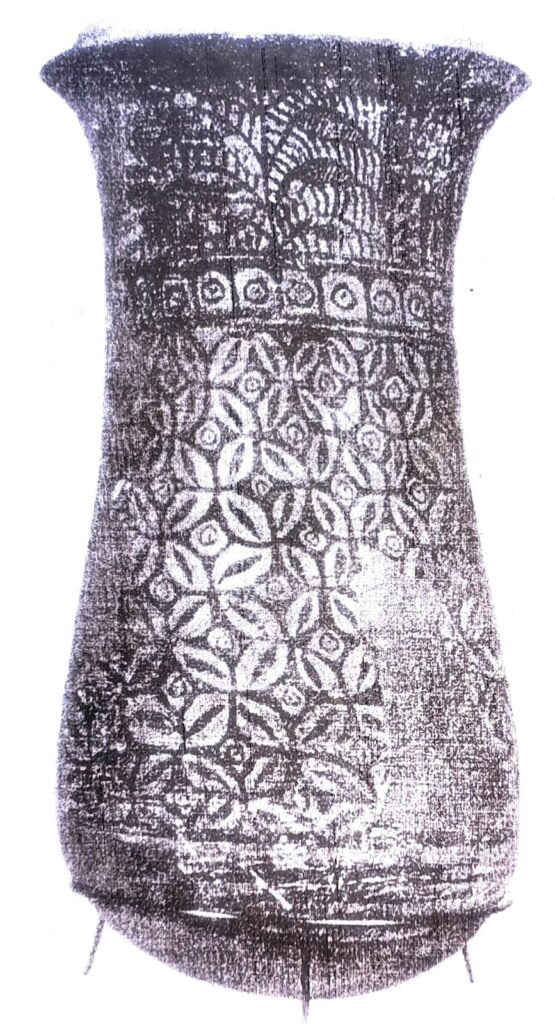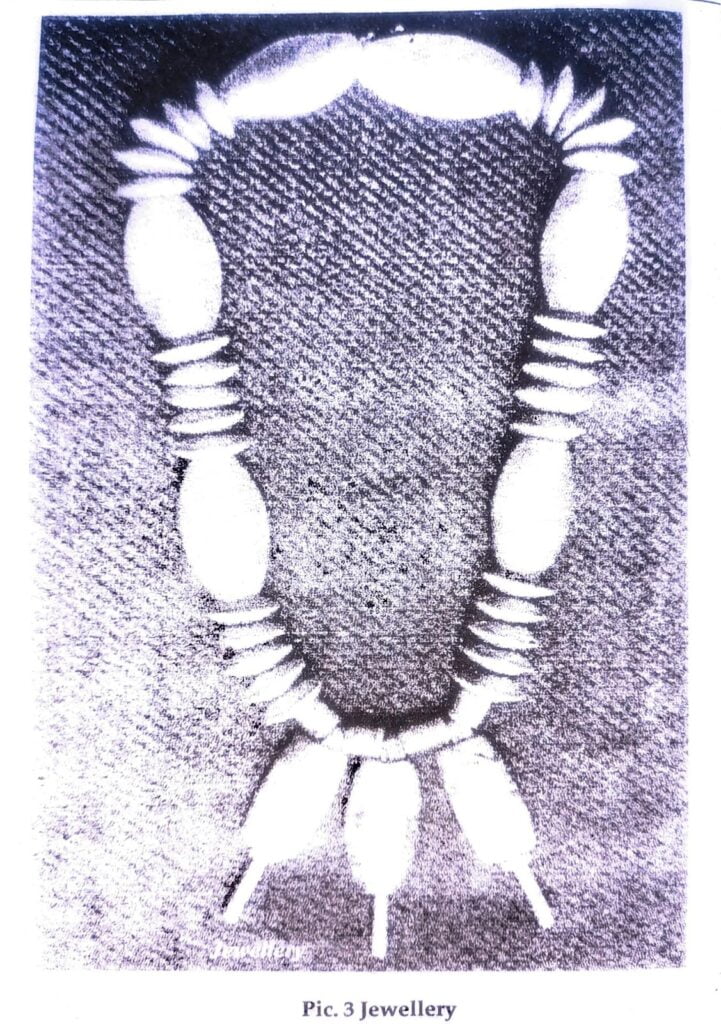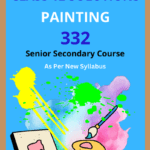NIOS Class 12 Painting Chapter 1 Art of Indus Valley Civilization Solutions to each chapter is provided in the list so that you can easily browse throughout different chapters NIOS Class 12 Painting Chapter 1 Art of Indus Valley Civilization and select need one. NIOS Class 12 Painting Chapter 1 Art of Indus Valley Civilization Question Answers Download PDF. NIOS Study Material of Class 12 Painting Notes Paper 332.
NIOS Class 12 Painting Chapter 1 Art of Indus Valley Civilization
Also, you can read the NIOS book online in these sections Solutions by Expert Teachers as per National Institute of Open Schooling (NIOS) Book guidelines. These solutions are part of NIOS All Subject Solutions. Here we have given NIOS Class 12 Painting Chapter 1 Art of Indus Valley Civilization, NIOS Senior Secondary Course Painting Solutions for All Chapter, You can practice these here.
Art of Indus Valley Civilization
Chapter: 1
PAINTING
Mother Goddess (Pic. 1)
| Title | Mother Goddess |
| Medium | Terra cotta |
| Date | Harappa period circa 2500 B.C |
| Finding site | Mohenjo-Daro |
| Size | 8.5×3.4cm |
| Artist | Unknown |
| Collection | National Museum, New Delhi |
This statue is first made of clay and afterwards baked in fire as per the terra cotta process. This figurine is one of the best examples of terra cotta. The baking is done with a great skill to achieve an unblemished red color. It has been identified as “mother goddess”.
The headgear of this statute, interestingly, consists of two small bowl-like forms on both sides of the head. These were probably used as lamps. These are again balanced by another form in the middle of the head which is supposed to be an elaborate hair style. The figure is wearing a miniskirt with a broad belt to hold in place. The figure is decorated with all kinds of jewelry.
Seal With Bull Design
| Title | Seal with Bull Design |
| Medium | Steatite |
| Date: | Harappa period circa 2500 B.C. |
| Finding site | Mohenjo-Daro |
| Size | 2.5×2.5×1.4cm |
| Artist | Unknown |
| Collection | National Museum New Delhi |
This seal is made of steatite. It has an elaborate intaglio design of a bull as a symbol of power and strength, which has been achieved by exaggerating the size of the hump and the horns. The diagonal linear motif of the neck. express the youthful energy of the animal.
There are some writing on the upper part of the seal, which are not yet deciphered.
Painted Pottery (PIC. 2)
| Title | Storage Jar |
| Medium | Clay |
| Date | Harappa period circa 2500 B.C. |
| Finding site | Mohenjo-Daro |
| Size | 2134″ |
| Artist | Unknown |
| Collection | National Museum New Delhi |
This jar is made on a potter’s wheel with clay. The shape was given shape by the pressure of the crafty fingers of the potter. After baking the clay model, it was painted with black color. – The motifs are of vegetals and geometric forms. Designs are simple but with a tendency towards abstraction. High quality of polish is used as a finishing touch.


Pic. 2 Painted Pottery
Jewelry (Pic. 3)
| Title | Jade Necklace |
| Medium | Jade |
| Date | Harappa period circa 2500 B.C. |
| Finding site | Mohenjo-Daro |
| Size | Diameter 5.5cm |
| Artist | Unknown |
| Collection | National Museum, New Delhi |
Jewelry was found in large number and variety at Indus Valley sites. Lot of gold, silver or Jade Necklace, ear rings, pendants, belts and bangles were found.

This Jade necklace is an excellent example of craftsmanship and designing. This is made of 30 round beads and six oval beads. Three lockets in the middle part of the necklace add to its beauty.
Intext Questions 1.1
Fill up the blanks.
1. The mother goddess statue is made of ” __________”.
Ans: Terracotta.
2. This was found at the site of “__________”.
Ans: Mohenjo-Daro.
3. The figure is wearing a”__________”.
Ans: Mini-skirt.
Intext Questions 1.2
Choose the right answer.
1. The seal is made of
(a) clay.
(b) stone dust.
(c) steatite.
Ans: (c) steatite.
2. This seal was found at
(a) Harappa.
(b) Mohenjo-Daro.
(c) Chanhu-Daro.
Ans: (b) Mohenjo-Daro.
Intext Questions 1.3
Choose the right answer.
1. The Jar is made of
(a) with Tools.
(b) on Potter’s wheel.
(c) with Chisel.
Ans: (b) on Potter’s wheel.
2. The date of the Jar is
(a) 1st C.A.D.
(b) 6th C.A.D.
(c) circa 2500 B.C
Ans: (c) circa 2500 B.C.
3. The size of the jar is
(a) 24½”
(b) 21″
(c) 30%”
Ans: (b) 21″.
Intext Questions 1.4
Choose the right answer.
1. The necklace is made of
(a) Diamond.
(b) Ruby.
(c) Jade.
Ans: (c) Jade.
2. The number of lockets are
(a) Two.
(b) Five.
(c) Three.
Ans: (c) Three.
3. Now it is in the collection of
(a) Indian Museum, Kolkata.
(b) National Museum, New Delhi.
(c) Lahore Museum, Pakistan.
Ans: (b) National Museum, New Delhi.
Model Questions
1. Write an appreciative note on any one artworks of Indus Valley civilization.
Ans: Mother goddess is one of the famous artworks found at Indus Valley. This statue is made of clay and then baked in fire as per the terra cotta process. This figurine is one of the finest example of terra cotta. The baking is perfectly done to achieve an unblemished red color.
The headgear of this statute, interestingly, consist of two small bowl-like forms on both sides of the head. These were probably used as lamps. These are again balanced by another form in the middle of the head which is supposed to be an elaborate hair style. The figure is wearing a miniskirt with a board belt to hold in place. The figure is adorned with all kinds of jewelry.
2. What do you know about terracotta?
Ans: When clay is baked in fire as per the terra cotta process, it becomes terracotta.
3. Describe some features of Indus Valley Art.
Ans: The artists and craftsmen of Harappa culture were extremely skilled in handling all kinds of material like metal, stone carving terra cotta and painting pottery. These artists preferred to use simplified motifs of animals, birds and plants. It is very clear that they were influenced and motivated by their religious beliefs and the cult of Siva and Shakti is very prominent in all their artworks.
Very Short Type Questions Answer
1. When did Indus valley civilisation flourish?
Ans: Between 2500 B.C. to 1750 B.C.
2. Name one statute from Indus valley which is made of terracotta.
Ans: Mother goddess.
3. What was the medium of Seal with Bull design?
Ans: Steatite.
4. Where was Storage Jar found?
Ans: Mohenjo-Daro.
5. What was the medium of Jade Necklace?
Ans: Jade.
6. Where were the first discoveries of Indus valley civilisation made?
Ans: Harappa.
Short Type Questions Answer
1. Describe Seal with Bull design.
Ans: This seal is made of steatite and has an elaborate intaglio design of a bull as a symbol of power and strength, which has been achieved by exaggerating the size of the hump and the horns. The diagonal linear motif of the neck express the youthful energy of the animal.
There are some writing on the upper part of the seal, which are not yet deciphered.
2. Describe painted pottery.
Ans: This jar is made on a potter’s wheel with clay. The shape is given shape by the pressure of the crafty fingers of the potter. After baking the clay model, it was painted with black color. The motifs are of vegetals and geometric forms. Designs are simple but with a tendency towards abstraction. High quality of polish is used as a finishing touch.
3. Describe the jewelry found in Indus valley civilisation.
Ans: Jewelry was found in great abundance and variety at Indus Valley sites. Lot of gold, silver or Jade Necklace, ear rings, pendants, belts and bangles were found.
The Jade necklace is an excellent example of craftsmanship and designing. This is made of 30 round beads and six oval beads. Three lockets in the middle part of the Necklace enhance its beauty.
4. What types of materials were excavated at Indus valley civilisation?
Ans: Lot of art and craft object have been discovered from these sites during excavations. These include statuettes, toys, seals, jewelry, pottery and tools.
5. Write a short note on the artists of Indus valley.
Ans: The artists and craftsmen of Harappa culture were extremely skilled in handling all kinds of material like metal, stone carving terra cotta and painting pottery. These artists preferred to use simplified motifs of animals, birds and plants. It is very clear that they were influenced and motivated by their religious beliefs and the cult of Siva and Shakti are very prominent in all their artworks.

Hi! my Name is Parimal Roy. I have completed my Bachelor’s degree in Philosophy (B.A.) from Silapathar General College. Currently, I am working as an HR Manager at Dev Library. It is a website that provides study materials for students from Class 3 to 12, including SCERT and NCERT notes. It also offers resources for BA, B.Com, B.Sc, and Computer Science, along with postgraduate notes. Besides study materials, the website has novels, eBooks, health and finance articles, biographies, quotes, and more.




